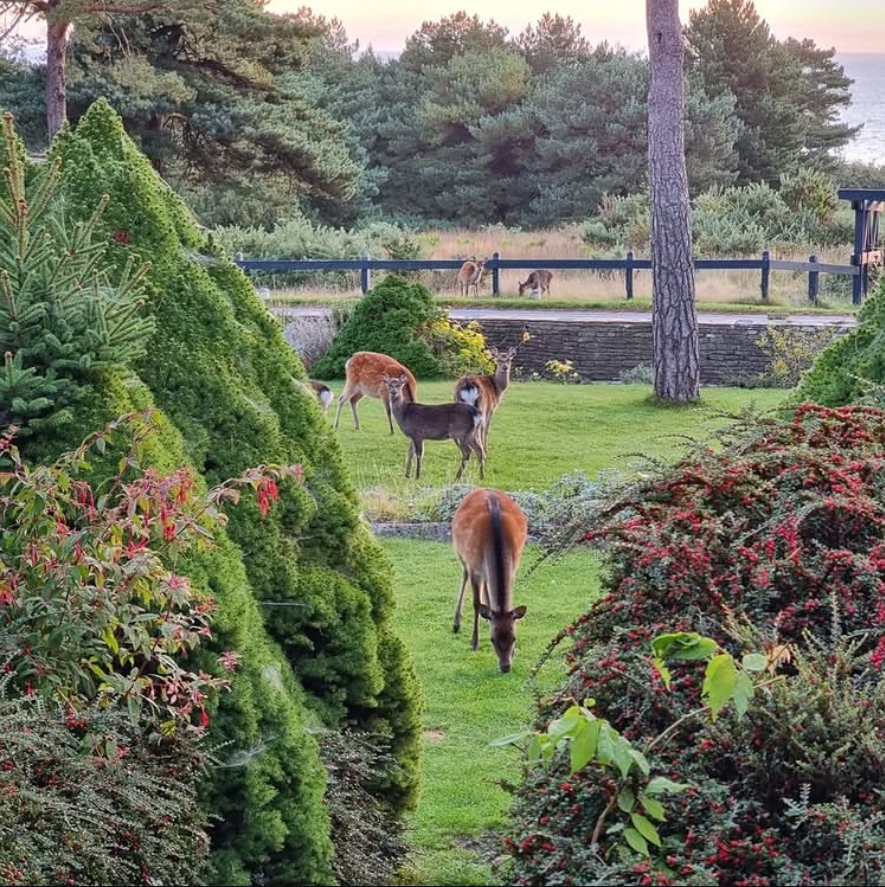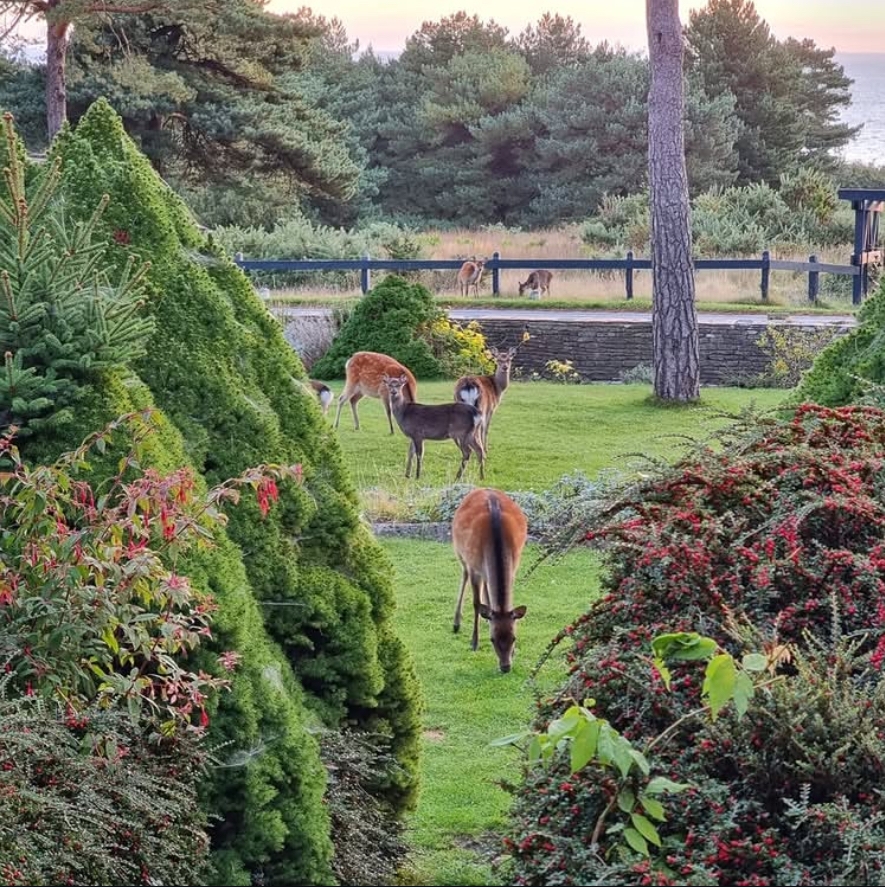IG: @knollhousehotel
Dorset’s wildlife thrives within the Area of Outstanding Natural Beauty (AONB) and along the Jurassic Coast, often called England’s “wildlife capital.”
Its mix of habitats—chalk downs, heathlands, woodlands, wetlands, and coastal cliffs—supports an astonishing variety of species, including rare and endemic ones.
Whether you’re tracking adders or watching falcons dive, Dorset offers a front-row seat to nature’s spectacle.
Birds
Dorset’s skies and shores buzz with avian life:
- Purbeck Heaths: This lowland heath near Wareham hosts the elusive Dartford warbler, a small, long-tailed bird favoring gorse, and the nocturnal nightjar, whose churring call haunts summer evenings.
- Brownsea Island: In Poole Harbour, this National Trust gem is a red squirrel stronghold but also a birding hotspot—think spoonbills, avocets, and migrating ospreys. Spring brings nesting sandwich terns.
- Arne RSPB Reserve: A heathland haven with stonechats, woodlarks, and rare hen harriers in winter. Over 80% of UK bird species have been spotted in Dorset.
- Coastal Cliffs: Peregrine falcons soar above Portland, while puffins (April-July) nest on cliffs near Dancing Ledge.
Mammals
From woodlands to coastlines, Dorset’s mammals range from common to critically rare:
- Red Squirrels: Brownsea Island is one of their last UK refuges—ferry over from Poole to spot these agile tree-dwellers.
- Bats: The county’s 17 species (of 18 UK total) include the rare Bechstein’s bat in West Dorset woodlands and greater horseshoe bats roosting in Purbeck caves.
- Dolphins and Seals: Bottlenose dolphins play off Durlston Head, while grey seals haul out near Portland—best seen from kayaks or boat trips.
- Deer: Roe and fallow deer roam Powerstock Common and the Dorset Downs, often glimpsed at dawn or dusk.
Reptiles and Amphibians
Dorset boasts all six native British reptiles, a rare feat:
- Sand Lizard: A heathland star, vibrant green in breeding season, thriving in Purbeck and Studland thanks to conservation efforts like Wild Purbeck.
- Smooth Snake: Britain’s rarest reptile, camouflaged and non-venomous, hides in Purbeck Heaths—spotting one is a long shot.
- Adders: Common on heathlands and downs, their zigzag markings stand out in spring. Also look for grass snakes, slow worms, and common lizards.
- Great Crested Newts: Ponds in Blackmore Vale and near Dorchester shelter these protected amphibians.
Insects and Butterflies
Dorset’s meadows and heaths are alive with tiny wonders:
- Butterflies: Over 80% of UK species flutter here—Adonis blues and chalkhill blues color Fontmell Down, while silver-studded blues shimmer on Purbeck heaths.
- Dragonflies: Emperor and scarce chaser dragonflies patrol wetlands like Radipole Lake near Weymouth.
- Field Crickets: Once near-extinct, they’ve rebounded in Purbeck through reintroduction—listen for their chirps in summer.
Marine Life
The Jurassic Coast teems below the waves:
- Fossils: Not alive now, but ammonites and belemnites litter Charmouth beaches, remnants of ancient seas.
- Fish and Crustaceans: Shore fishing off Chesil Beach yields mackerel and bass, while rock pools hide velvet swimming crabs and anemones.
Plants and Habitats
Dorset’s flora underpins its wildlife:
- Heathlands: Heather, gorse, and rare marsh gentians blanket Purbeck and Arne, feeding specialist insects.
- Chalk Grasslands: Orchids—bee, pyramid, and early spider—dot the Downs, alongside wild thyme and harebells.
- Ancient Woodlands: Oak, ash, and hazel in Powerstock Common support lichens and fungi, like the vivid fly agaric.
Where to Spot Them
- Purbeck Heaths: Reptiles, birds, and butterflies in one sprawling mosaic—walk Hartland Moor.
- Brownsea Island: Red squirrels and waders—book a ferry from Poole.
- Fontmell Down: Butterflies and orchids—spring or summer hikes shine.
- Durlston Country Park: Dolphins offshore, bats in caves—bring binoculars.
Conservation Notes
Projects like Wild Purbeck and the Great Heath have restored habitats, boosting sand lizards and heathland birds. Low light pollution also makes Dorset a stargazing bonus, doubling as a nocturnal wildlife haven.

